The Hoxne Hoard is the largest cache of late Roman silver and gold which had been discovered in Britain.
It was found on 16th November, 1992 in the village of Hoxne by a metal detectorist Eric Lawes who was only looking for a lost hammer.
He discovered a hoard that consists 865 Roman gold, silver and bronze coins from the late fourth and fifth century, currently estimated to around $4.3 million.
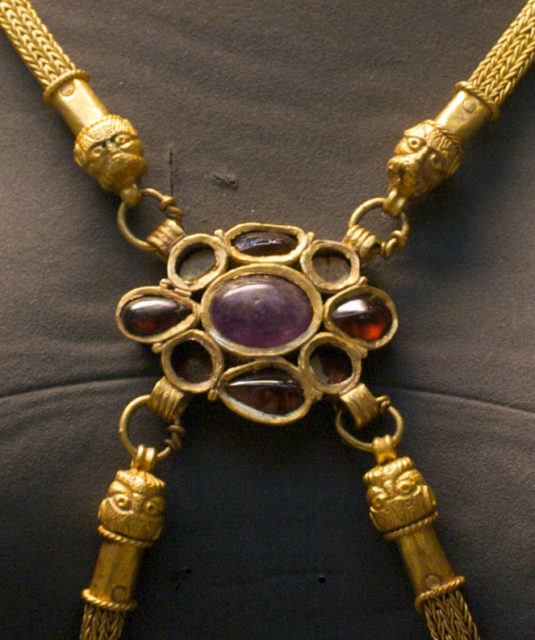
The hoard contains several rare and important objects and one of them is the Empress pepper pot.
It was excavated by professional archaeologists, who estimated a particular significance in the items found, for they were largely undisturbed and intact.
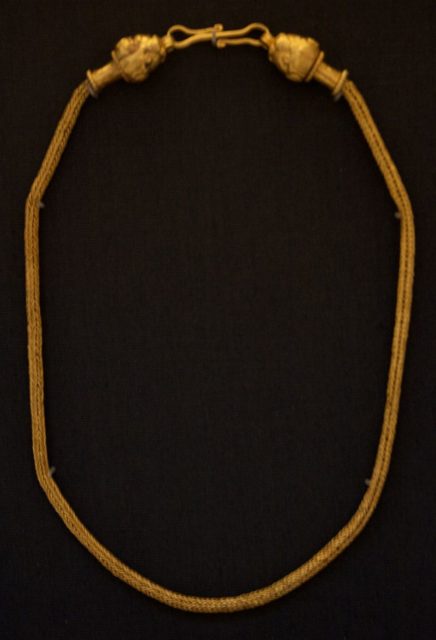
The hoard had been placed in a wooden oak chest and within the chest there had been some objects placed in smaller boxes while others had been wrapped in a woolen cloth.
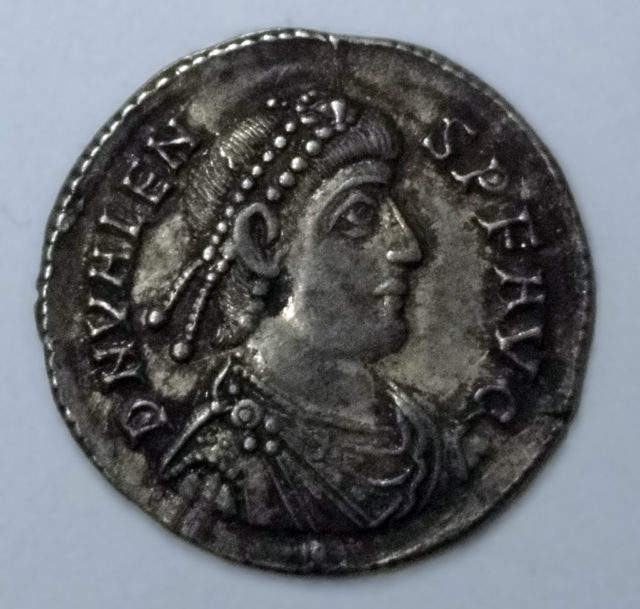
The Hoxne Hoard contains 569 gold coins which date to the reigns of eight different emperors, 191 silver coins (siliquae – silver coins produced from the 4th century CE) and 24 bronze coins (nummi).
The coins date after AD 407, which coincides with the end of Britain as a Roman province.
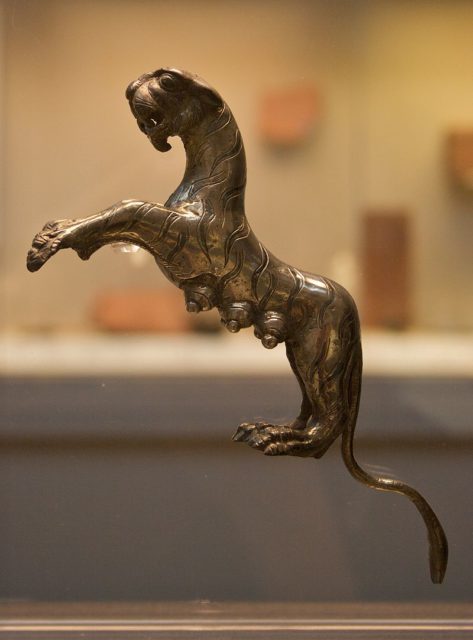
The jewelry in the hoard is entirely made of gold. There is one body chain, six necklaces, three rings, and nineteen bracelets.
The most precious jewel in the hoard is the body chain which is made of four finely looped gold chains, attached at front and back to plaques.
This kind of body chains can be seen in Roman art, sometimes on the goddess Venus or Nymphs.
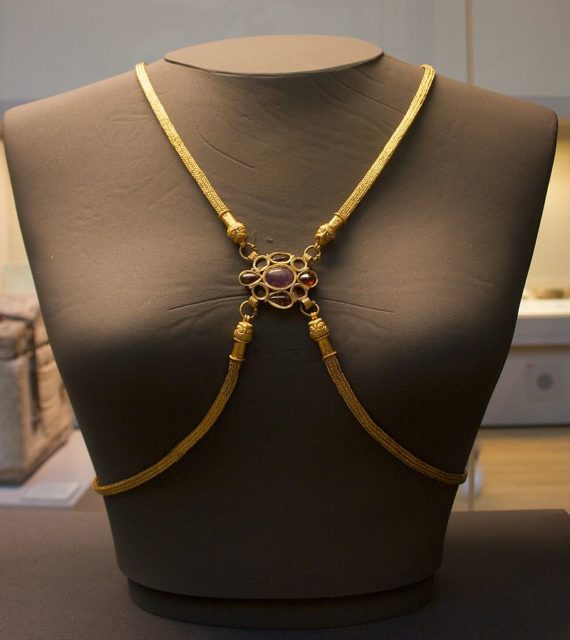
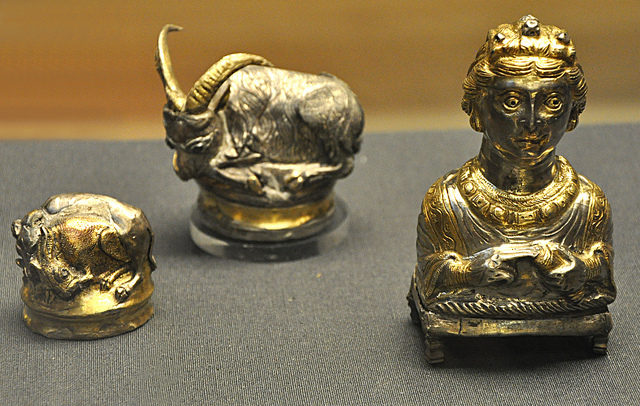
One of the most important finds of the hoard is the Empress pepper pot.
The empress’ hair, clothing and jewelry are carefully represented and she is holding a scroll in her left hand, giving the impression of education as well as wealth.
There are other pepper-pots in the hoard: The Hercules pepper-pot and Antaeus pepper-pot.
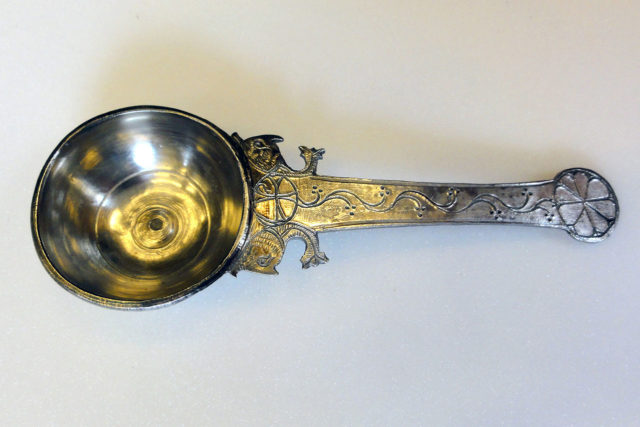
The hoard also contains a lot of silver-gilt items: four pepper-pots, a beaker, a vase, four bowls, a small dish and 98 silver spoons.
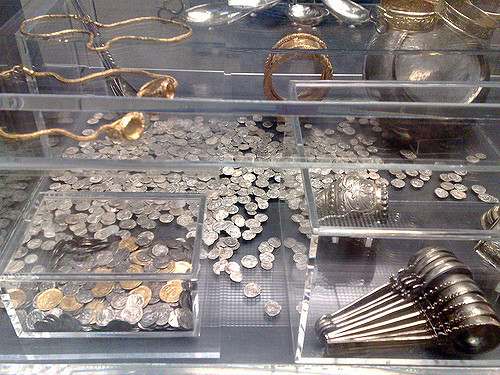
Iron and organic materials from the remains of the outer wooden chest where found in large iron rings, double-spiked loops and hinges, angle brackets, iron strips, strap hinges and nails.
Attila the Hun: the most feared man in history who died of a nosebleed
The most important items are on display in a perspex reconstruction of the chest at the British Museum alongside the roughly contemporary Thetford Hoard.